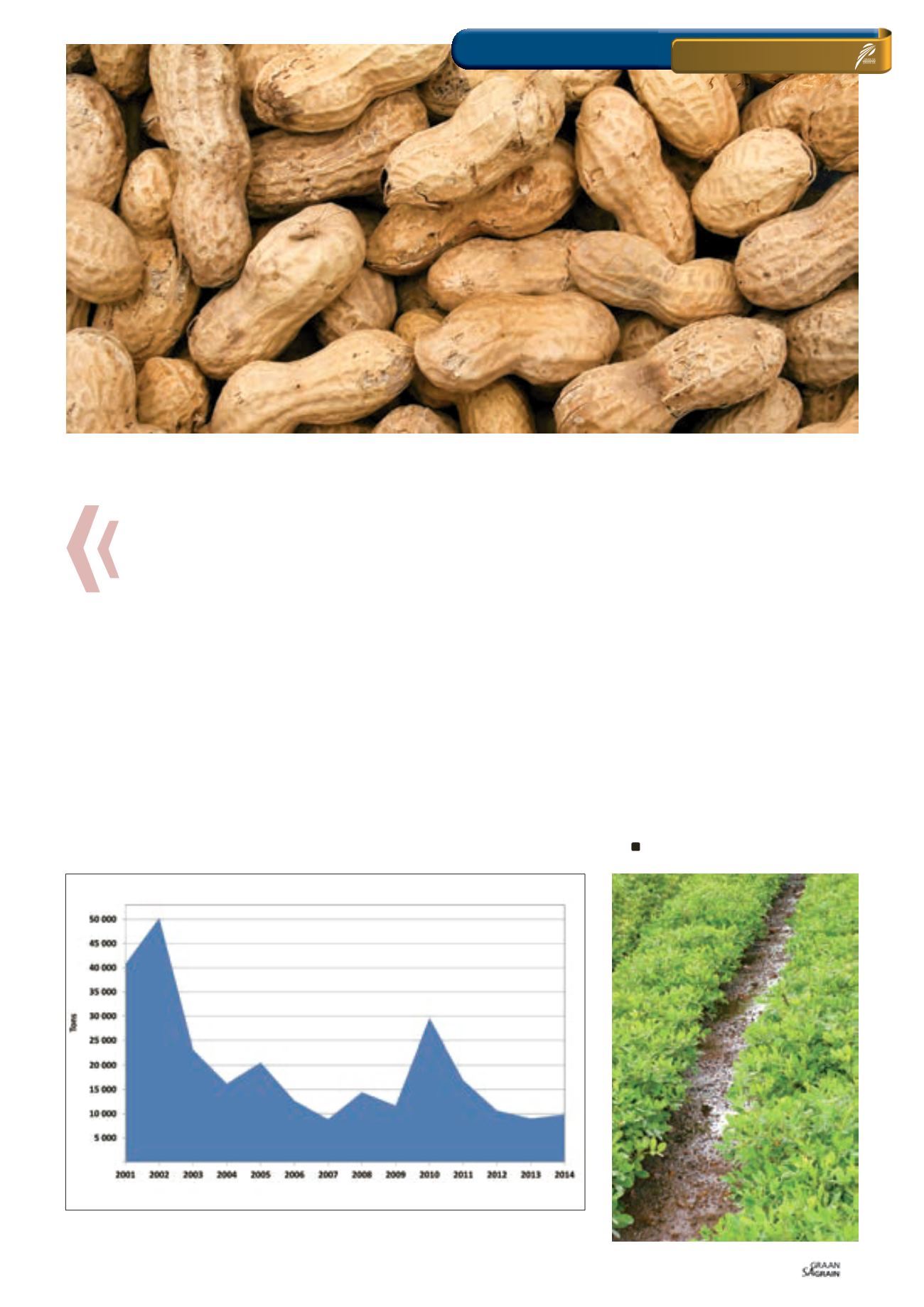

43
May 2015
ON FARM LEVEL
Graph 5: South African groundnuts exports.
Source:
Trade Map
(2015)
From 2010 to March 2015, international groundnut prices (US Run-
ner 40/50, Rotterdam prices) increased by 5%. The international
markets responded positively to these price increases. According
to
Oilworld
(2015), from 2010 to 2014, global groundnut production
increased by 4%. In 2015, global production is expected to decrease,
owing to unfavourable climatic conditions in China and India.
From 2010 to March 2015 the domestic prices (choice grade) in-
creased by 109%, from R5 500/ton to R11 500/ton. Producer prices
(sundry grade) increased from R3 500/ton to R8 000/ton. Producer
prices (crush grade) increased from R2 500/ton to R3 500/ton.
It is important to note that the South African groundnut industry
has not directly benefited in the global demand compared to other
producing countries. From 2010 to 2014, South Africa’s groundnut
exports decreased by 67%, from 29 655 tons in 2010 to 9 844 tons in
2014, according to
Trade Map
(2015) data (see
Graph 5
).
South African export perspective
The leading South African markets were Mozambique, Japan, Neth-
erlands, Belgium, Egypt, United Kingdom, Norway and Swaziland.
Exports to these countries were not consistent due to erratic domes-
tic production coupled with international competition.
On the other hand, there has been a 17% decrease on the imported
groundnut quantities, from 12 534 tons in 2001 to 10 395 tons in
2014. Over this period, the leading suppliers were Namibia, India,
Mozambique, United States, Zambia, Malawi and China.
Conclusion
The South African groundnut industry is confronting a downward
consumption trend due to a significant decrease in consumption.
South African consumers are highly price-elastic; hence there have
been relatively stable groundnut imports (lower prices). In addition,
the South African groundnut industry has not performed well inter-
nationally due to price competition and erratic production.
International buyers are seen to prefer consistent suppliers, high-
lighting the need for investment in local/South African high yield-
ing cultivars which will result in the ability of producers to take
advantage of the international demand for groundnuts. Finally,
higher yields per hectare may allow for more affordable domestic
prices in the edible market.
GRAIN MARKET OVERVIEW
SA Grain/
Sasol Chemicals (Fertiliser) photo competition

















